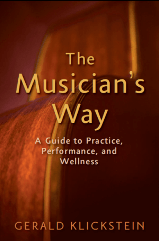
–Thomas Edison
The Musician’s Way, p. 216
If we musicians want to organize self-produced events – things such as concerts, festivals, and community projects – one way that we can mitigate financial risk and boost our revenues is to partner with non-profit organizations and then raise money via grants.
This post summarizes two strategies for doing so.
I use examples targeted to U.S. musicians, but the concepts apply similarly in numerous countries.
Grant Basics
Most institutions that award grants, such as foundations, can disburse monies only to registered non-profit organizations – typically those designated as 501(c)(3) in the U.S. tax code.
Although there exist some grant programs in the U.S. that aid individual musicians and artists, most either confer paltry sums or are not suited to performance or educational projects. Composers, however, will find more avenues to obtain individual grants.
Regardless, it’s best for more experienced musicians to come up with projects that can attract bigger sums and to forgo trivial grants because funders typically require time-consuming applications and reports.
For musicians with no project management and grantwriting experience, smaller grants and projects, successfully executed, provide sensible pathways to gain the know-how to lead larger projects.
Whatever our degree of experience, though, a sensible way to proceed is to team up with non-profit organizations whose missions intersect with ours. Then, those organizations can serve as our presenters or our fiscal agents. Below are concise guidelines and examples.
1. Non-Profit Organizations as Presenters
Let’s say that we want to start a concert series or festival in a town that we feel would embrace our music – we’ve got a powerful idea for our event, a well-written proposal, and an itemized budget.
We might partner with a non-profit organization such as a college or church that has an appropriate performance space to host our concerts. Such organizations will often want to team up with performers because presenting cultural events supports their missions to serve their communities and also helps them attract media attention and boost their reputations.
The non-profit organization we partner with would then submit grant applications to potential funders to underwrite costs such as artist fees, insurance, performance rights, recording, and advertising. In such instances, we’d usually write the bulk of the grant proposals that an organization submits and not burden their staff – they’d just review and edit what we write.
Case Example: I employed this funding structure when I directed the Southwest Guitar Festival in San Antonio, Texas. The University of Texas at San Antonio, where I was an Assistant Professor of Music, served as the presenter and recipient of the grant funds that I raised. Festival artists were then paid by the university, which also contributed resources such as performance spaces and concert hall staffing.
As a result of the grant funds and resources supplied by the university, the festival didn’t have to rely solely on ticket sales and registration fees to pay its bills. We kept ticket and registration prices low, making the event accessible to everyone, and the university was able to fulfill its mission of serving the greater community. We drew large audiences, and the festival earned glowing reviews and a modest profit. The surplus monies remained in an account at the university and helped fund subsequent festivals.
2. Non-Profit Organizations as Fiscal Agents
Another funding strategy that can complement or replace the one above involves working with non-profit organizations that don’t necessarily put on events but can receive grants to support our projects.
For instance, if we develop programs tailored to schoolchildren or the elderly – ones that we’d present at multiple sites in a particular region – we might partner with a community organization whose mission includes serving those populations.
That non-profit organization, acting as our fiscal agent, would receive grants and then pay us to deliver programs in the region it serves. Often, such fiscal agents retain a small portion of the grant monies received – the amounts vary and sometimes can be negotiated.
Case Example: I implemented this strategy to fund my fees to teach workshops to teen musicians at a number of high schools in Forsyth County, North Carolina. A local music society that promoted arts education served as the fiscal agent. I wrote two successful grant proposals that the organization submitted to the North Carolina Arts Council and the Winston-Salem Foundation, and the funding from those organizations meant that my workshops were free of cost to the schools and students.

Attracting Non-Profit Partners
To entice non-profit partners, we have to begin with cogent project goals – ones that will break new artistic ground, impact new audiences, target unmet needs, fuel community vitality, and so forth.
The first steps, therefore, entail not only understanding basic business principles but also recognizing opportunities, generating ideas, and identifying possible partners. (Update – See: Design Thinking for Audience Development)
Grantwriting resources along with links to funders are compiled in my post Resources for Grantseekers. Other related posts are categorized Entrepreneurship.
© 2011 Gerald Klickstein
Photo © Losevsky Pavel, licensed from Shutterstock.com
